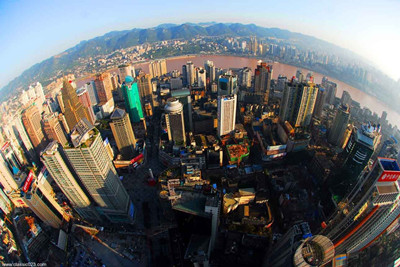It has become quite apparent that urbanization is now an unstoppable trend in China as the 1.3-billion-strong nation continues to seek to pluck more people out of poverty.
随着拥有13亿人的这个强国一直不间断的寻找让更多人脱贫的方法,中国的城市化现在已经明显成为一种不可阻挡的趋势。
China has a good track record in coping with urbanization.
而中国在应对城市化方面有着丰富的经验。
Some of what was once backward rural land has been turned into bustling towns and cities.
曾经落后的农村地区已经变成繁华的城镇和城市。

Many of the farmer-turned city dwellers have found themselves to be in an improved situation where they are entitled to better housing, healthcare and jobs.
许多以前耕种的城市居民发现自己有权享受更好的住房、医疗及就业机会。
The question now is how China can make its future cities more sustainable and suitable for living while at the same time generating enough jobs for the newcomers who have abandoned their livelihoods in their rural hometowns.
现在的问题是,中国如何能让自己的未来的城市更持久,更适宜居住,同时为放弃了农村老家生计的新定居者们提供足够的工作岗位。
So how can we make the building of future Chinese cities more sustainable?
那么,我们怎样才能使未来的中国城市建筑更持续化?
How can we preserve our cultural urban legacies in the process?
在这一进程中我们怎样保护我们的城市文化遗产?
译文属可可原创,仅供学习交流使用,未经许可请勿转载
来源:可可英语 //m.moreplr.com/broadcast/201411/343080.shtml












